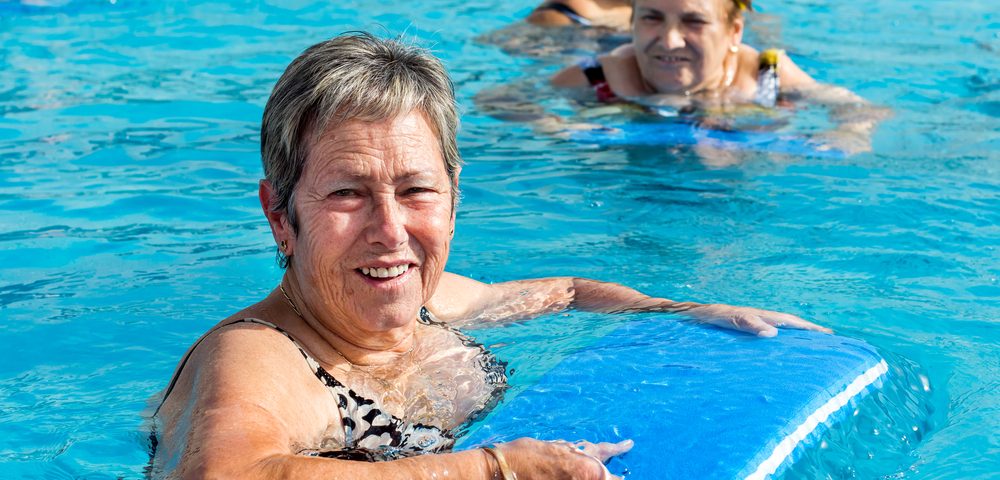A study assessing hydrotherapy — exercise in water, such as a pool — found that it improved pain and quality of life in patients with fibromyalgia (FM). However, the treatment did not improve scapular kinematics, or motion of the scapula (shoulder blade).
The study reporting the findings is titled “Effects of a 16-week hydrotherapy program on three-dimensional scapular motion and pain of women with fibromyalgia: A single-arm study,” and was published in the journal Clinical Biomechanics. This study is part of a larger investigation, registered as NTC01839305.
The study included 20 women with fibromyalgia, ages 40 to 60. There was no control group in this study because the investigators considered it unethical to leave patients in severe pain with no treatment for the entire 23-week period of the study.
Motion of the scapula was measured three times before starting the therapy to establish a baseline value for movement of the shoulder blades.
Participants underwent hydrotherapy for 45 minutes, twice a week, for 16 weeks. Evaluations were done at eight weeks and at the end of the study, at 16 weeks.
Evaluations included the assessment of scapular motion during raising and lowering the arm in two different positions; pain intensity during arm movement, and the pressure pain threshold (PPT) over 18 fibromyalgia tender points. PPT is defined as the minimal amount of pressure when a sensation of pressure first changes to pain.
The Fibromyalgia Impact Questionnaire (FIQ), which assesses the health status of patients with fibromyalgia, and the Medical Outcomes Study 36-item Short Form Health Survey (SF-36), a general indicator of health status, were also performed during evaluations.
Improvements were seen in pain as measured through PPT, but also reported by the women in the questionnaires.
“Results of the present study show that painful symptoms of women with FM have considerably decreased after a 16-week hydrotherapy treatment and this improvement could also be observed in several quality of life aspects of these women,” the researchers wrote.
These improvements in pain sensitivity and function were already detected after eight weeks of treatment and were clinically relevant.
However, no improvement was seen in scapular motion. The researchers suggest that patients with FM develop certain arm movements that avoid causing pain, and they continue to move their arms in that same way even when the pain is gone or reduced.
“The scapular motion observed may be a new movement pattern acquired by the women with FM to perform daily life activities. This may be an adaptation due to the great levels of chronic pain they presented and even after the withdrawal of the painful stimuli, they may have maintained this acquired pattern,” the team wrote.
“Motor behavior may adapt to chronic painful conditions with, among other aspects, changes in the mechanical behavior such as modified movement and stiffness, in order to ‘protect’ from further pain,” the researchers added.

